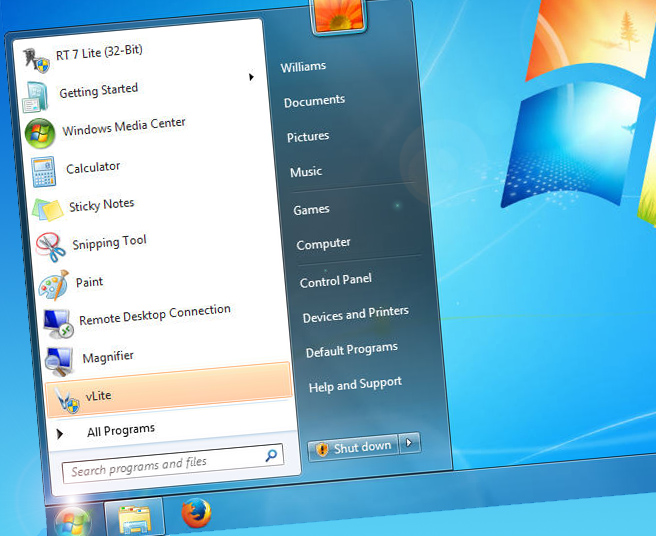 When Windows 95 was released there was a lot of fuss about the Start menu and debate about whether it would catch-on. It was a significant departure from icon shortcuts in program groups; or superficially at least. In reality, it was simply the program groups (folders) put in a hierarchical order and rather wisely, the option to place folders, icons and shortcuts on the desktop remained (to this day).
When Windows 95 was released there was a lot of fuss about the Start menu and debate about whether it would catch-on. It was a significant departure from icon shortcuts in program groups; or superficially at least. In reality, it was simply the program groups (folders) put in a hierarchical order and rather wisely, the option to place folders, icons and shortcuts on the desktop remained (to this day).
The Start menu developed; it grew out of the logic of the program shortcut and built upon that logic. It was not intended to abruptly impose a new paradigm but to slowly replace the shortcut as customers became comfortable with the concept. That journey never really ended, as the icon shortcut was not phased-out -- why would it be?
There is no good reason to withdraw functionality that provides another easy avenue for the user to achieve their desired goal. The Start menu became the paradigm for Windows; indeed, to many, it was Windows. There it remained -- from Windows 95 all the way through to Windows 7 -- a 17 year (and counting) fixture.
So why was the Start menu unceremoniously dumped with the introduction of Modern UI? Why was the continuous story of the shortcut, to Start menu, to Modern UI broken; and why (if this break was needed) did the older shortcut icon survive? I think at least part of that story can be traced to Bill Gates stepping down as chief software architect in 2006, removing his vision and historical design anchor point; effectively leaving Steve Ballmer with the vision control. By 2006, the groundwork for Windows 7 was already in place, so its eventual release in 2009 followed the basic Start menu paradigm but with some bells and whistles added; nothing radical, just another incremental step along the path.
Ballmer is, by trade, a business manager (and a darned good one) but he did not bring Gates' programming and software development skills to the party. Combine this with Microsoft’s historic and continuing berating and confrontational management style and you find an environment where everyone (even the boss) is forever trying to prove themselves by leading change -- regardless of whether that change is needed/necessary, or not. Such an environment does not reward brilliantly managing what you already have; it only values something new that kicks away the old. That is an accident waiting to happen; change for its own sake and almost regardless of external demand.
In short, the answer was that Microsoft stopped listening to its customers and started dictating to them. The mantra of a common interface that ran through the new Microsoft culture has been allowed to overcome the more important and influential voice of the consumer (the one with the money). Microsoft left a version of the command prompt (cmd.exe – from the 1980s!) in place, for goodness sake, so keeping legacy code obviously was not a problem. The Start menu decision was management dogma, pure and simple.
Stepping back for one second, the basic marketing question that comes to mind is; "what harm would it do to give your customer the choice of Modern UI or Start menu?" Why not follow the successful adoption process from Windows 95? After all, if Modern UI is as good as Microsoft claims, then people will naturally migrate to it as they see the benefits outweighing their archaic old Start menu. Again, the answer is wholly within Microsoft; managers need to bring change in order to prove self-worth to the company. If Modern UI and the Start menu were allowed to coexist, then there was always the risk that the Start menu would win the popularity contest and the change would fail; along with the sponsor’s career. On the back of that risk, the Start menu had to go.
Personally, I have no opinion on whether Modern UI is better or worse than the Start menu; it is an otiose argument. The deciding factor is the context. To my mind, Modern UI is superior on a touch screen and the Start menu is better on a desktop. Your views may (and almost certainly will) differ. The underpinning point is that Microsoft could (and should) respect your opinion and let you have that choice; it just decided not to do so.
(You may recall that prior to Windows Phone 7’s release in 2010, there was Windows Mobile 6; a mobile OS based on the desktop paradigm. Put simply, it was dire. You can’t impose a desktop OS on a mobile device -- or the other way around. There are simply different beasts.)
The Modern UI/Start menu debate is only happening because Microsoft made a terrible marketing decision based on internal company problems. It decided to remove functionality that could easily be left in place and which a good proportion of its customers demanded. Any decision that reduces or alienates a proportion of your customers is a bad decision, unless you can squeeze more profit from the slice of business that is left. This is not Microsoft’s natural stomping ground and it was a critically bad decision. Microsoft is not about disruptive change or dictating to customers (I can hear the laughter!). It was and should be about development, choice and response to customers.
As any great leader will tell you; no decision is final and mistakes must be rectified quickly and with minimal fuss. There is still time for Microsoft to become the company of customer choice and embrace the diversity of preferences of its users. There just needs to be the will to do it. As an aside, reorganizing the company’s department structure cannot magically make-up for removing choice and it definitely will not bring success to a failing strategy.
The Start menu is just a symptom of the underlying problem at Microsoft -- bad management practice. If the leader can’t change a bad strategy, then it is time to change the leader. It seems, judging from last week's announcement, that Microsoft agrees.
 Andy Gowen is a compulsive buyer of the latest and brightest tech. He has managed UK regional IT projects, has a successful consultancy business and is COO of Extremis Technology; a company that develops communities for people displaced by disaster. Andy is an associate lecturer at the University of East Anglia teaching market strategy and leadership.
Andy Gowen is a compulsive buyer of the latest and brightest tech. He has managed UK regional IT projects, has a successful consultancy business and is COO of Extremis Technology; a company that develops communities for people displaced by disaster. Andy is an associate lecturer at the University of East Anglia teaching market strategy and leadership.
via BetaNews http://feeds.betanews.com/~r/bn/~3/5M97ANp1AZQ/
Aucun commentaire:
Enregistrer un commentaire